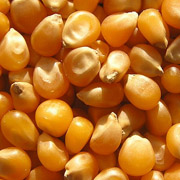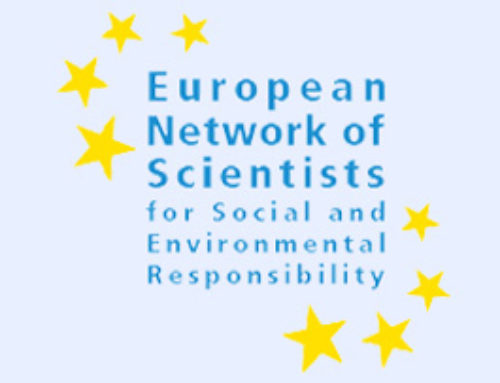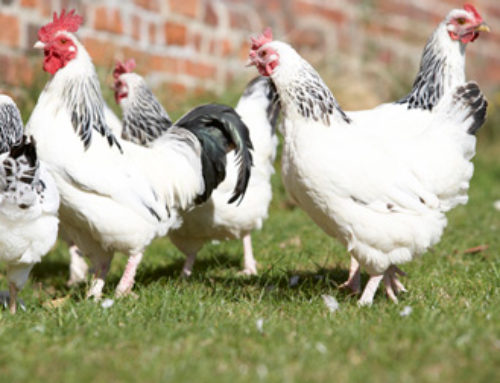 By Evaggelos Vallianatos
By Evaggelos Vallianatos
14 October 2012
The engineers who inserted the DNA bacterial gene, Bt, into corn assumed corn would produce nothing but a poison for the insects feeding on it.
However, moving the Bt gene into the alien environment of corn, in addition to the insect-killing protein, the Bt gene could give birth to other proteins with unpredictable behavior and possibly toxic effects on human health and nature.
Martha L. Crouch, former professor of biology at Indiana University, recognized the hubris of genetic engineers fiddling with life. She said, “Genes have an ecology – a complex way of interacting with themselves and the environment – that can interfere with the linear logic of genetic engineering.”1
Genetic engineers also constructed the workhorse of their ambition, what makes genetic engineering so deceptively appealing to farmers and especially to companies like Monsanto with the vision of controlling the world’s food supply: food crops that remain harmless from the killing power of certain week killers. That way a perfect marriage of pesticides and food seals the perpetuity of pesticides.
In order to reach such heights, genetic engineers take genes from one species and shoot them into the genes of another. They willfully ignore that, in nature, genetic material moves freely only within a single species. Butterflies don’t mate with fish.
This manipulation of nature strikes home because it affects the food we eat.
According to “GMO Myths and Truths,” a June 2012 report of Earth Open Source, a nonprofit British science organization, genetic engineering is not precise or predictable and “has not been shown to be safe.” GM crops “have shown clear signs of toxicity in animal feeding trials – notably disturbances in liver and kidney function and immune responses.”
In summary, the GM crops:
“Are laboratory-made, using technology that is totally different from natural breeding methods, and pose different risks from non-GM crops;
“Can be toxic, allergenic or less nutritious than their natural counterparts;
“Are not adequately regulated to ensure safety;
“Do not increase yield potential
“Do not reduce pesticide use but increase it;
“Create serious problems for farmers, including herbicide-tolerant ‘superweeds’, compromised soil quality, and increased disease susceptibility in crops;
“Have mixed economic effects;
“Harm soil quality, disrupt ecosystems, and reduce biodiversity;
“Do not offer effective solutions to climate change;
“Are as energy-hungry as any other chemically-farmed crops; and
“Cannot solve the problems of world hunger but distract from its real causes – poverty, lack of access to food and, increasingly, lack of access to land to grow it on.”
The genetic engineering of food threatens human health and nature. But it is also another attack against the fragile food security of the world and the integrity of traditional food systems feeding about three-and-a-half billion human beings at the dawn of the twenty-first century. The industrialized world colonized the tropics and invented pesticides and genetic engineering. However, the effects of this violent development have come home to roost, causing anxiety and deep decline in the quality of food and life. Out of this strife there emerged agroecology, the integration of traditional agrarian knowledge with ecological science. If this science of agroecology were to be scaled up, it might heal the wounds of industrialized agriculture all over world.2
Yet despite the threat behind the inoculation of food crops with alien DNA genes, six genetic engineering companies (Monsanto, BASF, DuPont, Bayer, Syngenta and Dow) and six countries (the United States, Brazil, Argentina, India, Canada and China) are leading the way in making the world a field for the genetically modified or “transgenic” crops – fast.
These GM crops have had two commercial purposes: One, sell farmers crop seeds that would be unaffected by weed killers; and, second, sell farmers seeds that would become plants that would kill feeding insects. Certainly, all this would be seen as convenience to farmers but, more important than that, the entire enterprise of scrambling the genetic stuff of food gives the owners of this technology the potential ownership of food all over the world.
For this reason the traits of the seeds have nothing to do with feeding the world or making agriculture more productive and less toxic.3
In fact genetic engineering at the farm is becoming an almost transparent “science fiction” experiment — with straightforward political effects in concentrating power in a handful of corporations and, in this unmistakable manner, resurrecting feudalism.
In 2007, the George W. Bush administration was planning to punish Europe for hesitating to adopt Monsanto’s GM crops.4 Such pressure is bearing fruits as now Europe is moving into the American-like GM crops.5
Meanwhile, biotech companies are shuffling genes between unrelated species to manufacture drugs, infant formula, and, perhaps, human breast milk, right within the milk of cows, goats, and sheep. Moreover, they are using the cells of corn, tobacco, soybeans and rice for the production of drugs. Can we suspect corn living a double life? Or, is it moral that food crops would be secret factories for vaccines, contraceptives, growth hormones and other designer drugs? This is known as biopharming.6
One of my students at Pitzer College asked me how could she protect herself from this invisible onslaught, and I suggested she eats organic food.
According to the Council for Responsible Genetics’ Official Statement on Biopharmaceutical Crops, by 2009, the US Department of Agriculture had approved more than 300 open-field trials for biopharmaceutical crops in dozens of states.
Just like with the Bt corn, pollen from corn, tobacco, rice and soybeans pregnant with the genetic stuff of drugs is bound to fly in the wind, contaminating food crops and nature. The surreptitious use of genetic engineering to produce pharmaceutical proteins and chemicals in farmers’ fields is a threat to life.
This form of “farming” is no longer agriculture or drug manufacturing. It is, instead, a political movement adding biological weapons to the mechanical and chemical armory of the plantation, broadly defined to include pharmaceutical conglomerates. It is agribusiness’ new “green revolution” (assisted by genetic engineering companies), designed to bury the peasant and the family farmer.
This is true in the genetic engineering of food, especially the production of sterile seeds, which would be forcing both the farmers and peasants to buy new seeds every growing season.7
There is a global moratorium against the “terminator” seeds. The USDA and Monsanto own the sterile seeds technology, which is married to chemicals. The sown seeds express one or more traits only with the assistance of sprays. The farmer’s seeds thrive or die on the presence of chemicals, which trigger or abort their fertility.
In this way genetic engineering comes out in its true colors – the best friend of giant corporations and large farmers, the worst enemy of family farmers and peasants, and poison for nature.
Don M. Huber, emeritus professor of plant pathology at Purdue University, has been leading a campaign to convince USDA to slow down, indeed end, its irresponsible approval of more GM crops until extensive studies have answered the critics’ questions. But USDA pays no attention to Huber who is despairing on the future of American agriculture. In a September 2012 conference, Huber spoke about “The woes of GMOs,” the dark age-like conditions in the GM fields in America. He could have easily spoken about the woes of American and global agriculture addicted to more industrialization in the form of scrambling our food with foreign genes. His major complaint is the overuse of the weed killer glyphosate as the golden bullet of the genetic engineers. But glyphosate is potentially any other week killer. He said:
“What we have in our fields, our farms and our homes is not natural. The increased disease, pest pressure, and empty calories are NOT normal. Corn used to be the healthiest plant you could grow. Now, multiple diseases, pests, and weak plants are the common denominator of ‘modern’ hybrids. Wheat, that staple grain of mankind, is now loaded with toxins, allergens, and chemicals. Sickness and disease are increasing in our crops, animals and people in spite of the broad array of fungicides and drugs administered. One can only ask, what has changed so drastically in this ecology we call farming? Over three decades ago we started the shift to a monochemical glyphosate herbicide program that was soon accompanied by glyphosate- and insect-resistant genetically engineered [Bt] crops…. Genetic engineering is more like a virus infection than a normal breeding process and results in a multitude of mutations and epigenetic effects as genetic integrity in the plant is disrupted. These ‘foreign’ bacterial genes are highly promiscuous and easily transferred by wind or insects to other plants; to soil microorganisms during plant residue decomposition, or to intestinal microflora during food digestion where they continue to direct the production of toxins and allergenic proteins. Epigenetic effects are manifest in GMO plants as a yield drag, poor nutrient efficiency, increased disease, and reduced stress tolerance.”
Huber is right. However, genetic engineering is the latest woe in some 70 years of woes inflicted on us by industrialized agriculture: corrupting and poisoning our lives and threatening the natural world with extinction.
How can one explain the ceaseless use and misuse of dangerous pesticides, synthetic petrochemicals unnecessary for the most part for growing food? I resort to metaphors like that of religion when millions “believe” in things beyond reason. And like the clerics of an established religion, the supporters of farm biocides, including weed killers like glyphosate, resort to science, modernity and even health and food in justifying the continuous use of sprays poisoning our food and the natural world.
Of course, money and power lubricate and sustain pesticides and genetic engineering. This senseless and deleterious business practice shows clearly the rotten nature of capitalism. Unless we can defeat the proponents of industrialized agriculture and GM crops, we are doomed to even more woes.
Huber says future historians will wonder less about “how many pounds of pesticide we did or didn’t apply, but by how willing we are to sacrifice our children and future generations for this massive genetic engineering experiment that is based on flawed science and failed promises just to benefit the bottom line of a commercial enterprise.”
Once again, Huber is right though he underestimates that the genetic engineering is but a small part of the really gigantic experiment of industrialized agriculture based on power, bad science, and the resurrection of medieval plantations. Pesticides glue this modern agrarian empire while genetic engineering adds technological tricks to the consolidation of power in this global enclosure.
I hope Americans end the genetic engineering of food, including biopharming. But the least they can do is require the labeling of GM food. Like the Europeans, Americans deserve to know what they are eating. Mark Lappe and Britt Bailey, two capable and ethical scientists, explain why:
“[T]he worst case scenario of all is if we allow corporations to thwart the rights of consumers to know [what kind of food they are eating] – and epidemiologists to track – the genetic footprints of their potential folly. The ultimate foolhardiness is if we bow to such pressures and fail to label and track this new generation of genetically adulterated products. Certainly, if we have learned anything, it is that our hubris in dominating nature often puts us into harm’s way. If we fail to mark the path with suitable disclosures and labels, and instead allow it to be littered indiscriminately with natural and transgenic seeds alike, we may discover that, like Hansel and Gretel, we are unable to find our way out of the woods.”8
In November 2012, Californians have a choice to approve Proposition 37 and guide Americans in finding their way out of the scrambling of their food.
Evaggelos Vallianatos, former US EPA analyst, teaches at Pitzer College. He is author of several books, including “Poison Spring” (forthcoming from Bloomsbury Press).
REFERENCES:
1 Martha L. Crouch, “How the Terminator terminates” (an occasional paper of the Edmonds Institute, revised edition, 1998).
2 Olivier De Schutter, “The Right to Food” (Human Rights Council, Sixteenth session, Agenda item 3, Promotion and protection of all human rights, civil, political, economic, social and cultural rights, including the right to development. UN General Assembly, 20 December 2010.)
3 Vandana Shiva et al., “The GMO Emperor Has no Clothes: A Global Citizens Report on the State of GMOs – False Promises, Failed Technologies” (Florence, 2011); Bill Freese, “Why GM Crops Will not Feed the World,” Genewatch, 2009.
4 “Wikileaks Cables Reveal U.S. Sought to Retaliate Against Europe Over Monsanto GM Crops,” Democracy Now! December 23, 2010.
5 Rosemary Mason and Palle Uhd Jepsen, “The Silent Killers: Human Health and Global Biodiversity Lies in the Hands of the Pesticides Industry” (18 September 2012).
6 “Potential Risks of Biopharming in Plants.”
7 Crouch, “How the Terminator terminates.”
8 Marc Lappe and Britt Bailey, Against the Grain: The Genetic Transformation of Global Agriculture (London: Earthscan, 1999) 149-150.





Leave A Comment
You must be logged in to post a comment.